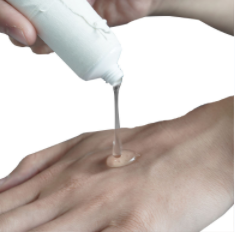When the skin is burned, cleaning the burn is essential to prevent infection and reduce pain. The following are the importance, methods, and precautions for cleaning burn wounds. Follow me to take a look..jpg)
Why is it important to clean burn wounds?
Cleaning a burn wound can prevent bacterial infection. Remove any debris or loose, nonviable tissue from the wound surface to reduce the risk of infection. Minimizes the risk of wound infection by removing potential sources of contamination from the wound surface. Since the skin has been injured, symptoms of infection can easily occur and can lead to more serious problems. And the use of cold water during the cleansing of burn wounds can relieve pain and float skin debris, making the healing process easier. Hydrates the wound surface, which helps maintain tissue vitality and promotes further wound healing.
How to clean a burn wound?
Different degrees of a burn require different methods of cleaning it. To give you a better idea of ways to clean burn wounds, we have listed a few methods as follows.
Rinse with cool water:
Rinse the burn with cold running water for at least five minutes. Cold water can help relieve pain by dissolving and floating skin debris, reducing scarring and reducing the risk of infection. Rinse with cool water: Place the burn under cold running water for at least five minutes to remove impurities and reduce pain.
Clean with disinfectant:
You can use disinfectant containing iodine, chlorine, hydrogen peroxide, or alcohol. First, wash your hands and dry them, then gently apply disinfectant around the wound, and clean the wound with cotton balls or gauze to keep the wound clean and prevent infection.
Surgical excision:
For burns that are deep or have a lot of dead skin tissue, your doctor may perform surgical cleaning.
Apply a functional wound dressing:
After cleaning and disinfecting, apply a clean dressing to the wound. Here are two types of wound dressings that are suitable for use after burns:
Silicone Foam Dressing:
It is a new type of medical dressing, which is usually used for wound treatment after burns. It has a moisturizing effect, and Silicone Foam Dressing can keep the part moist so that the wound will not become dry due to long-term exposed storage. The dressing layer can absorb fluid around the wound and reduce the situation of red fluid exuding from the wound. Silicone Foam Dressing can relieve pain symptoms for injured patients, especially when the burn wound area is extensive and the wound is particularly sensitive.
The dressing is soft and comfortable with strong elasticity for comfort. Its high-density structure can effectively isolate various pathogenic bacteria and bacteria, and reduce the chance of the wound being contaminated by external microorganisms. In conclusion, Silicone Foam Dressing is a dressing with high softness, and good moisturizing properties, and can effectively relieve pain symptoms. It can promote wound healing, reduce secondary damage, and is a very worthwhile post-burn wound dressing.
Hydrogel Dressing:
This is a commonly used dressing for burns. The dressing is designed based on polymer technology, which can relieve wound pain, prevent wound infection and promote wound healing. Hydrogel Dressing creates a moist environment in the wound, preventing dryness, infection, and ulceration of the wound. The dressing is transparent in color, soft and flexible, and can also facilitate wound observation. And it is also very convenient to use, it can be cut to the required size without using additional adhesive tape or bandage. Hydrogel Dressing can reduce unnecessary pain and damage while avoiding sticking to the wound. In conclusion, Hydrogel Dressing is a highly soft, transparent dressing with good moisturizing properties, which can keep the wound moist, relieve pain and prevent infection. It is a good choice for wounds after burns.
Precautions:
Do not force to clean: When cleaning the burn wound, do not wipe or brush vigorously, which may cause secondary damage to the wound.
Gently pat dry: After cleaning, gently pat the wound dry with a clean towel, and fully stretch the wound to allow air to circulate.
Keep warm: For deep burn wounds, keep warm. Use a warming blanket or wear warm clothing to keep your body temperature stable.
in conclusion:
Cleaning and disinfecting burn wounds is a critical step in reducing pain and promoting healing. If the wound area is large or complicated, please seek the help of a professional doctor in time. But regardless of the size of the wound, timely cleaning and disinfection are very necessary.
For more information on Innomed® Silicone Foam Dressing, refer to the previous articles. If you have customized needs, you are welcome to contact us; we will serve you wholeheartedly.
At Longterm Medical, we transform this data by innovating and developing products that make life easier for those who need loving care.
Editor: kiki Jia
Date: March 22, 2023

 English
English عربى
عربى Español
Español русский
русский 中文简体
中文简体








